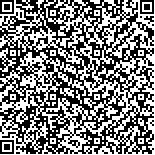| Quote
: |
韩严,杨宗保,程燕彬,陈宝华,黄婉仪,王超.基于1H-NMR研究齐刺法对急性胃黏膜损伤小鼠代谢的影响[J].湖南中医药大学学报英文版,2020,40(10):1232-1238.[Click to copy
] |
|
| |
|
|
| This paper
:Browser 2608times Download 1458times |
| 基于1H-NMR研究齐刺法对急性胃黏膜损伤小鼠代谢的影响 |
| 韩严,杨宗保,程燕彬,陈宝华,黄婉仪,王超 |
| (湖南中医药大学针灸推拿学院, 湖南 长沙 410208;厦门大学医学院中医系, 福建 厦门 361005;福建中医药大学针灸学院, 福建 福州 350000) |
| 摘要: |
| 目的 采用核磁共振氢谱(1H nuclear magnetic resonance spectra,1H-NMR)技术探讨齐刺法对急性胃黏膜损伤小鼠代谢的影响。方法 将24只SPF级小鼠随机分为正常组、模型组、足三里组和三阴交组,每组6只。适应性饲养1周,采用束缚-冷浸法制备急性胃黏膜损伤模型。造模成功后,足三里组和三阴交组在鼠板上固定电针(4Hz,50Hz)30 min,并分别电针足三里穴和三阴交穴;正常组和模型组用鼠板固定30 min,所有小鼠每日干预1次,共7 d。实验结束后,光镜下观察胃黏膜形态;检测小鼠胃组织1H-NMR谱,利用模式识别方法分析各组代谢物差异,用正交偏最小二判别分析(OPLS-DA)模型和独立样本t检验,以P<0.05筛选潜在的生物代谢标志物。结果 正常组小鼠胃黏膜结构完整,上皮细胞排列整齐,未见溃疡。与正常组比较,模型组小鼠胃黏膜表皮细胞脱落,溃疡灶明显;胆碱、乙醇胺含量增加(P<0.05),甘油、丙氨酸、谷氨酸、谷氨酰胺含量减少(P<0.05)。与模型组相比,足三里组小鼠胃黏膜炎性细胞减少,表皮细胞增殖;胆碱、乙醇胺含量减少(P<0.05),甘油、丙氨酸、谷氨酸、谷氨酰胺含量增加(P<0.05)。与模型组相比,三阴交组小鼠胃黏膜上皮细胞增多,粒细胞、肥大细胞减少;胆碱、乙醇胺减少,甘油、丙氨酸、谷氨酸、谷氨酰胺含量增加,差异均无统计学意义(P>0.05)。与三阴交组相比,足三里组小鼠胃黏膜结构较为完整,腺体排列整齐,无明显充血水肿,溃疡灶呈明显愈合趋势;胆碱、乙醇胺、丙氨酸含量下降(P<0.05),甘油、谷氨酸、谷氨酰胺含量增加(P<0.05)。结论 电针足三里可有效回调急性胃黏膜损伤小鼠胃相关代谢物表达水平,促进胃黏膜损伤修复,恢复代谢通路稳定。 |
| 关键词: 急性胃黏膜损伤 1H-NMR 齐刺法 电针 足三里 代谢组学 |
| DOI:10.3969/j.issn.1674-070X.2020.10.011 |
| Received:June 08, 2020 |
| 基金项目:国家自然科学基金面上项目(81973934)。 |
|
| Study on Effects of Triple Needling on the Metabolism of Acute Gastric Mucosal Injury in Mice Based on 1H-NMR |
| HAN Yan,YANG Zongbao,CHENG Yanbin,CHEN Baohua,HUANG Wanyi,WANG Chao |
| (College of Acupuncture, Moxibustion and Tuina, Hunan University of Chinese Medicine, Changsham Hunan 410208, China;Department of Traditional Chinese Medicine, Xiamen University School of Medicine, Xiamen, Fujian 361005, China;College of Acupuncture and Moxibustion, Fujian University of Traditional Chinese Medicine, Fuzhou, Fujian 350000, China) |
| Abstract: |
| Objective To explore the effects of triple needling on the metabolism of acute gastric mucosal injury in mice by using 1H nuclear magnetic resonance spectra (1H-NMR). Methods A total of 24 SPF mice were randomly divided into a normal group (C), a model group (M), a Zusanli (ST36) group (Z) and a Sanyinjiao (SP6) group (S), with 6 mice in each group. After one week of adaptive feeding, an acute gastric ulcer model was prepared by the restraint-cold immersion method. After successful modeling, the Z group and the S group fixed electroacupuncture (4 Hz, 50 Hz) on the mouse board for 30 minutes, and perform electroacupuncture at Zusanli (ST36) and Sanyinjiao (SP6). The C group and the M group were fixed with a mouse plate for 30 minutes, and all mice were intervened once a day for 7 days. After the intervention, the morphology of the gastric mucosa was observed under the light microscope; the 1H-NMR spectrum of the mouse gastric tissue was detected. The differences in metabolites were analyzed using pattern recognition methods, and the orthogonal partial least squares discriminant analysis (OPLS-DA) model and independent sample t test were used to screen potential bio-metabolic markers with P<0.05. Results In the C group, the structure of the gastric mucosa was intact, and the epithelial cells were arranged neatly, and no ulcer was seen. Compared with the C group, the gastric mucosal epidermal cells of the M group were shed and the ulcer focus was obvious, in which the content of choline and ethanolamine increased (P<0.05), and the content of glycerin, alanine, glutamic acid and glutamine decreased (P<0.05). Compared with the mice in the M group, the inflammatory cells in the gastric mucosa of the Z group decreased and the epidermal cells proliferated. The content of choline and ethanolamine decreased (P<0.05), and the content of glycerin, alanine, glutamic acid and glutamine increased (P<0.05). Compared with mice in the M group, the gastric mucosal epithelial cells in the S group increased, and granulocytes and mast cells decreased. Choline and ethanolamine decreased; glycerin, alanine, glutamic acid and glutamine increased, but the difference was not statistically significant (P>0.05). Compared with the S group, the structure of the gastric mucosa in the Z group was relatively intact, with neatly arranged glands. There was no obvious congestion and edema, and the ulcers showed an obvious healing trend; choline, ethanolamine, and alanine content decreased (P<0.05). The contents of glycerol, glutamate, and glutamate aminoamide increased (P<0.05). Conclusion Electroacupuncture "Zusanli (ST36)" can effectively regulate the expression level of gastric related metabolites in mice with acute gastric mucosal injury, promote the repair of gastric mucosal injury, and restore the stability of metabolic pathways. |
| Key words: acute gastric mucosal injury 1H-NMR triple needling electroacupuncture Zusanli (ST36) metabonomics |
|

二维码(扫一下试试看!) |
|
|
|
|


